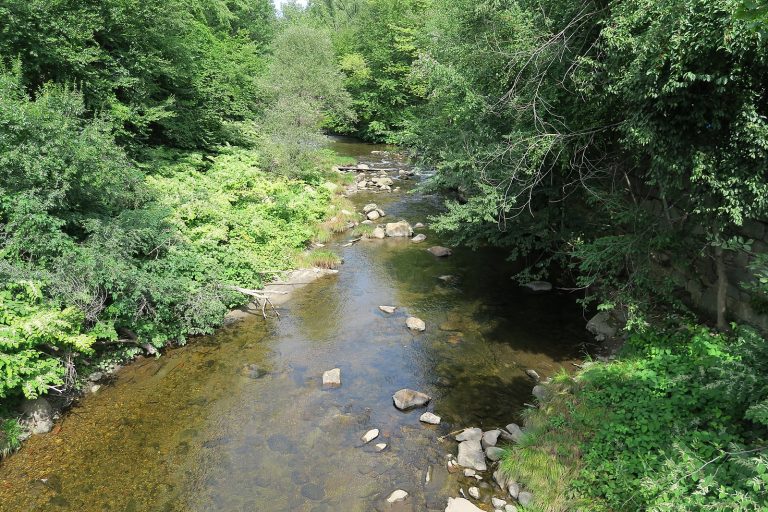Published on September 14, 2021

There are many sugar maples along the banks of the Mill River in western Massachusetts. But this one is special, at least to Danielle Ignace. Its wide, green canopy keeps Ignace cool as she works or entertains friends, even on this hot summer day in Williamsburg. Its tens of thousands of leaves, rustling in a breeze, produce air that is moist and fresh. Its shade, she says, calms her nerves.
And this sugar maple is a carbon sucking, storage machine. Ignace, an assistant professor of forestry at the University of British Columbia and a Harvard Forest research associate, has just made some calculations using an online tool.
To date, it shows Ignace’s tree has stored 22,049 pounds of carbon dioxide or CO2, one of the main greenhouse gases that is warming our planet. That’s the amount of carbon released by 1,100 gallons of gas burned in an average car.
“That’s quite a feat for a single tree,” says Ignace, grinning.
The hunt for fast, high-tech ways to slow climate change is even more urgent after the release earlier this month of an international report that shows the planet is warming faster than expected. Many experts say the report is also a call to make better use of the tools we already have along our streets, in our yards, parks and forests: trees.
It can be hard to find hope in the face of climate change, but trees are a place to start. What’s more, the oaks, maples, beeches and pines many of us take for granted may be delivering countless health benefits, too, from lower anxiety, to better child development and stronger immune cells. Those benefits are a boon for people who live near or among trees. Those who don’t lose out.
“Proximity to trees is associated with a ridiculously broad range of health benefits,” says Dr. Howard Frumkin, a professor emeritus at the University of Washington School of Public Health. “I wish we had pills that were this good for health.”
A few countries, notably Japan and South Korea, have invested in forest bathing, a practice that involves spending time among trees to improve health. But in the U.S., prescribing time in nature is still pretty far outside mainstream medicine.
Frumkin says that may be because there are still a lot of unanswered questions: What dose is needed? What form of tree contact is best? Do you need big trees or do small trees do the trick, and do different trees deliver different benefits?
“We’re not yet able to tease the forest from the trees,” agrees Peter James, an assistant professor at Harvard Medical School.
James is working on the dose question. He’s merging big data sets from phones, real-time surveys and Google Street View maps to understand what people are looking at when they report feeling specific emotions.
“We want to know what’s exactly within view — is it trees, is it flowers? — and how those things are related to health behaviors and health outcomes,” James explains.
Continue reading at WBUR News.
Originally written by Martha Bebinger for WBUR News.